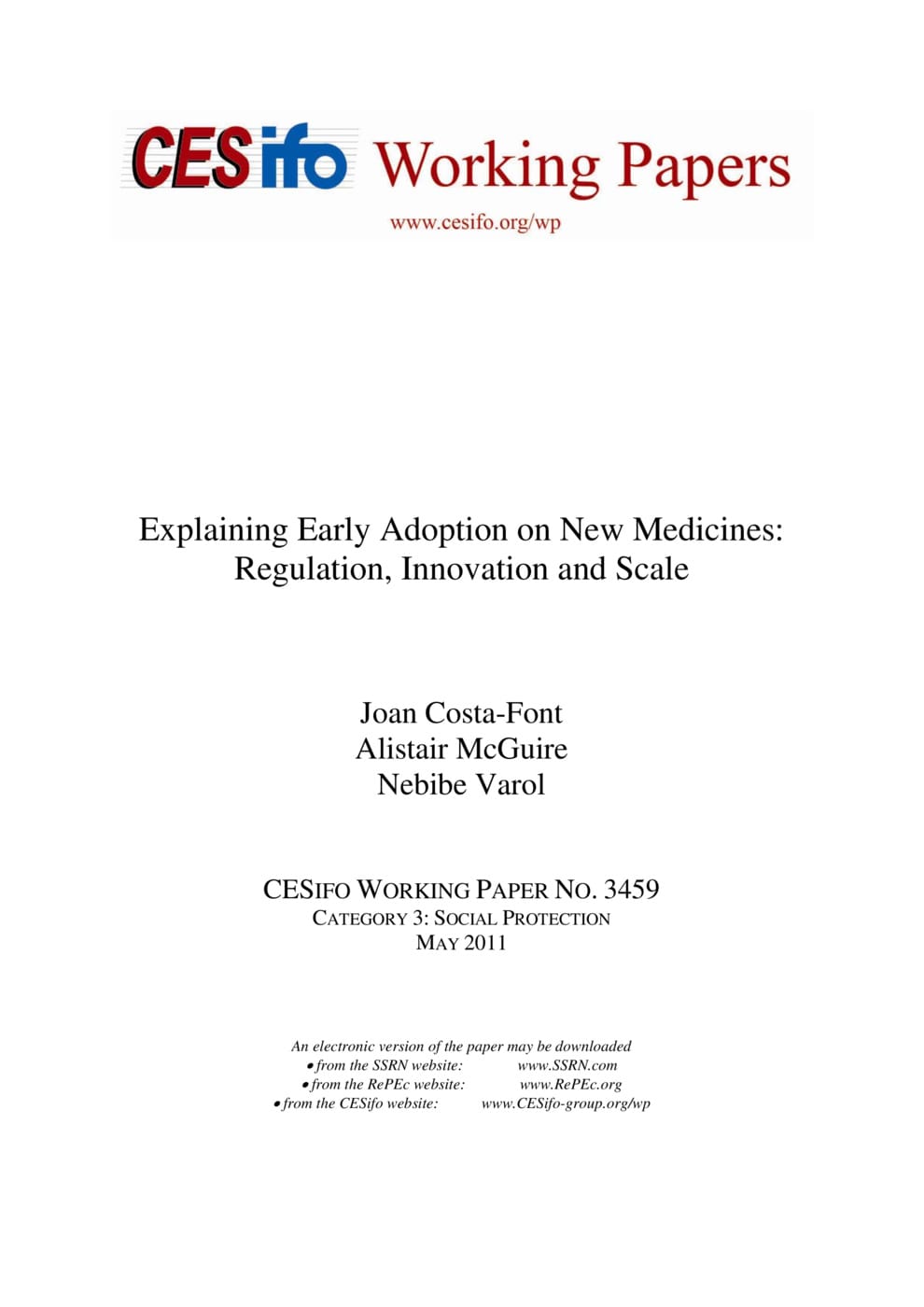Explaining Early Adoption on New Medicines: Regulation, Innovation and Scale
CESifo, Munich, 2011
CESifo Working Paper No. 3459

Understanding how price regulations affect the adoption of new patent-protected pharmaceutical technologies is a crucial question in designing health systems. This paper addresses this question by examining how price expectations shape the probability of launch, controlling for competition, market size expectations, firm and molecule heterogeneity across the major OECD markets during 1999-2008. Due to the censoring of launch data we use discrete time duration modelling with parametric and semi-parametric duration dependence specification. A sub-sample analysis including only EU countries also investigates the impact of price interdependencies and potential firm strategies in launch and pricing decisions. The empirical analysis of the global set of molecules which have diffused across more than 10 markets in the OECD, suggests there is a statistically significant and robust price effect in the adoption of new pharmaceutical technologies; low-prices result in reduced and slower adoption. Concentrated therapeutic subgroups, reflecting market crowding constitutes a significant barrier to entry. Sub-sample findings from the EU market suggest strategic firm behaviour with firms delaying launch in low-priced markets and attempts to maintain price differentials across interdependent markets to a minimum due to price complementarities. Firm economies of scale and the therapeutic importance of innovations are other important drivers of adoption speed.
Social Protection
Industrial Organisation